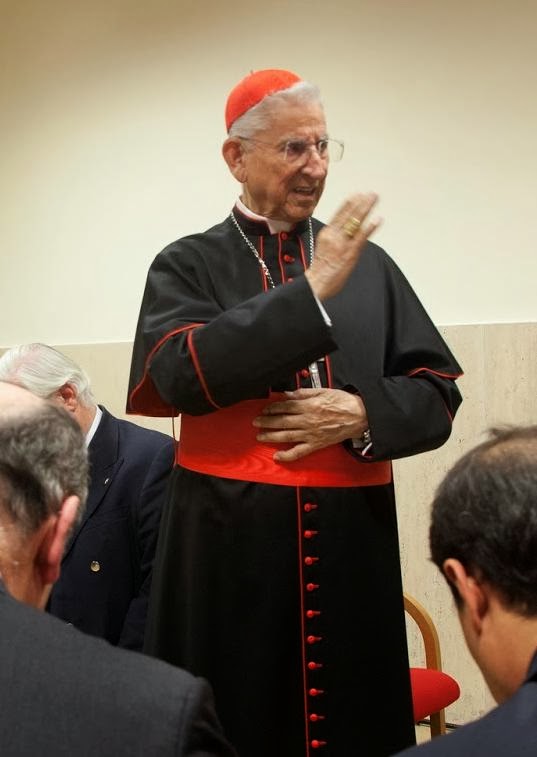
Today, the 19th of December, 2009, the Holy Father, Benedict XVI, has received in private audience His Excellency, Archbishop Angelo Amato, Prefect of the Congregation for the Causes of Saints. In the course of that audience, the Holy Father has authorised the Congregation to promulgate the decree recognising the heroic virtue of Pope Pius XII and declaring him to be Venerable.
In the modern era, the process of Canonization, of which the decree of heroic virtue is the first step, was firmly established by the Decrees of Pope Urban VIII and Pope Clement XI. By a Bull of 5th July, 1634, Urban VIII definitively reserved to the Holy See the faculty of granting cultus to individuals and prohibited their veneration prior to the judgement of the Holy See.
It had previously been the practice, despite, it must be said, a Decree of Pope Alexander III in 1170, renewed by Pope Innocent III in 1210, for Bishops to render people Blessed at least to be honoured in their own Dioceses, although it was for the Pope to extend such devotion to the Universal Church, which is, to render them Saints in the technical sense. However, the Pope could also make localised Decrees in some cases. For example Blessed (now Saint) Rose of Lima, who Pope Clement declared to be patroness of Peru, and Pope Clement X declared to be patroness of South America, the Philippines and the East Indies, and also Blessed (now Saint) Stanislaus Kostka, who Pope Clement X declared patron of Poland and Lithuania.
Special mention must be made of the monograph of one Prospero Lambertini "the cleverst man in Christendom," once Promoter of the Faith, an official of the S. Congregation of Rites, who would later become Pope Benedict XIV. The monograph was entitled De Servorum Dei Beatificatione et Beatorum Canonizatione and for more than two centuries remained - and to an extent remains - the basic text on the subject. The two examples of Rose of Lima and Stanislaus Kostka are mentioned at lib. I, cap. xxxix of that monograph. Two early editions (1743 and 1749) are available at Google Books. (See if you can spot the reference to vampires when Lambertini discusses the post mortem state!)
The document relating new procedures introduced by Pope Benedict XVI gives a summary of the history of the procedures involved.
Venerable Pope Pius XII, pray for us!
In the modern era, the process of Canonization, of which the decree of heroic virtue is the first step, was firmly established by the Decrees of Pope Urban VIII and Pope Clement XI. By a Bull of 5th July, 1634, Urban VIII definitively reserved to the Holy See the faculty of granting cultus to individuals and prohibited their veneration prior to the judgement of the Holy See.
It had previously been the practice, despite, it must be said, a Decree of Pope Alexander III in 1170, renewed by Pope Innocent III in 1210, for Bishops to render people Blessed at least to be honoured in their own Dioceses, although it was for the Pope to extend such devotion to the Universal Church, which is, to render them Saints in the technical sense. However, the Pope could also make localised Decrees in some cases. For example Blessed (now Saint) Rose of Lima, who Pope Clement declared to be patroness of Peru, and Pope Clement X declared to be patroness of South America, the Philippines and the East Indies, and also Blessed (now Saint) Stanislaus Kostka, who Pope Clement X declared patron of Poland and Lithuania.
Special mention must be made of the monograph of one Prospero Lambertini "the cleverst man in Christendom," once Promoter of the Faith, an official of the S. Congregation of Rites, who would later become Pope Benedict XIV. The monograph was entitled De Servorum Dei Beatificatione et Beatorum Canonizatione and for more than two centuries remained - and to an extent remains - the basic text on the subject. The two examples of Rose of Lima and Stanislaus Kostka are mentioned at lib. I, cap. xxxix of that monograph. Two early editions (1743 and 1749) are available at Google Books. (See if you can spot the reference to vampires when Lambertini discusses the post mortem state!)
The document relating new procedures introduced by Pope Benedict XVI gives a summary of the history of the procedures involved.
Venerable Pope Pius XII, pray for us!












































